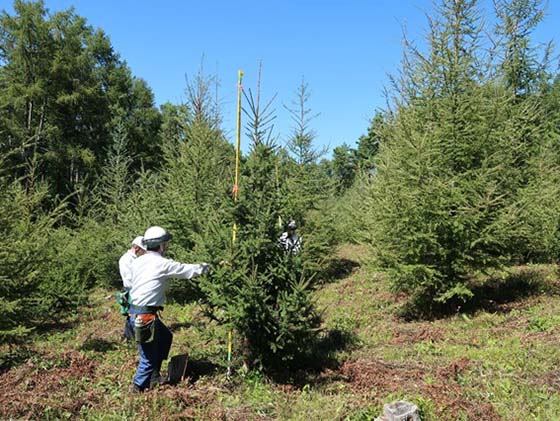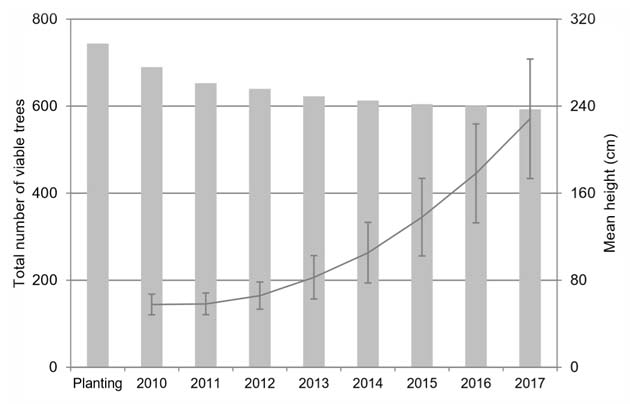Home > Research > Research Results > Research Results 2019 > Ex Situ Conservation of Rare Trees Requires More than Planting
Update:September 4, 2019
Main content starts here.
Ex Situ Conservation of Rare Trees Requires More than Planting
| Article title |
Survival rate and growth within seven years after the establishment in genetic resource forest of Picea maximowiczii |
|---|---|
| Author (affiliation) |
Toshio Katsuki (a), Hiroyasu Ono (b), Hiroto Inoue (b) (a) Tama Forest Science Garden, FFPRI, Hachioji, Tokyo, Japan. (b) Chubu Regional Forest Office, Kurita, Nagano, Japan. |
| Publication Journal |
Forest genetics and tree breeding, Volume 8(2), 69-77, Japanese Society of Forest Genetics and Tree Breeding, 2019 DOI:10.32135/fgtb.8.2_69( External link ) |
| Content introduction |
Picea maximowiczii (Pinaceae) is a category-II threatened species (vulnerable) of Japan. The estimated number of mature trees is less than 2,000. In 2010, Chubu Regional Forest Office established a genetic resource forest of Picea maximowiczii. Scions from the trees growing across almost all of the geographical distribution range have been propagated as grafted trees and planted in the genetic resource forest. The forest was segmented into two areas, based on the original locality of the tree: the North area (9 localities, 69 clones) and the South area (9 localities, 65 clones). The Forestry and Forest Products Research Institute has been working with Chubu Regional Forest Office to monitor the survival rate and height of the trees. After 7 years of planting, the accumulated survival rate was 80% and the mean height of trees was 228 cm, indicating that most trees were growing well. The mean mortality rate of trees in the South area was higher than that of the North area at 1.9 % per year between 2015 and 2017, compared with 0.3% per year, respectively. At this rate, the number of trees in the South area will decrease from 372 to 139, and the number of clones will decrease from 65 to 51 by 2050. One potential way to prevent the loss of trees and maintain the number of clones is to re-propagate grafted saplings from the scions collected from small and young trees growing in the genetic resource forests. This study indicates the importance of regular research and management for the continuous ex situ conservation of genetic resource forests.
Photo. Grafted saplings of Picea maximowiczii, grown 2 m or over (taken on September 14, 2017).
Figure. Annual changes in the total number of viable trees (bar) and mean height (line) of Picea maximowiczii growing in the genetic resource forest from the time of planting to 2017. For tree height data, an error bar denotes standard deviation. |
Copyright © Forest Research and Management Organization. All rights reserved.


